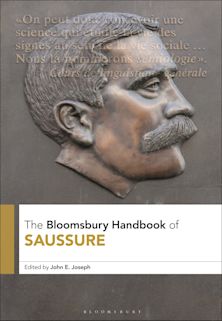- Home
- ACADEMIC
- Linguistics
- Semiotics
- Early Body Ornaments and the Origins of our Semiotic Mind
Early Body Ornaments and the Origins of our Semiotic Mind
Payment for this pre-order will be taken when the item becomes available
- Delivery and returns info
-
Free US delivery on orders $35 or over
You must sign in to add this item to your wishlist. Please sign in or create an account
Description
By employing a cognitive semiotic theory based on pragmatism and enactivism, this book explores the nature and emergence of early body ornamentation, which has long been at the forefront of the debate on modern human origins.
Using a range of artefacts including the Blombos Cave Beads, ostrich eggshells, and engraved pieces of ochre, the book examines the connection between early body ornaments and the semiotic mind, and addresses the question of whether early body ornaments were made by a symbolic mind, or whether they provided the material and semiotic scaffolding required for such a mind to emerge.
Table of Contents
List of Tables
Preface
Acknowledgements
1. Introducing the Case of Early Body Ornaments
2. Searching for a Theory to Describe the Nature of Past Material Signs
3. Presenting the Semiotic Theory of Charles Sanders Peirce
4. Applying Peircean Semiotics to the Case of Early Body Ornaments
5. Searching for a Theory to Trace the Emergence of Past Material Signs
6. Composing a Pragmatic and Enactive Theory of Cognitive Semiotics
7. Applying Cognitive Semiotics to the Case of Early Body Ornaments
8. Concluding Thoughts on the Origins of our Semiotic Mind
Appendix: An Unorthodox Phenomenology of Round Shells
References
Index
Product details

| Published | Feb 05 2026 |
|---|---|
| Format | Hardback |
| Edition | 1st |
| Extent | 304 |
| ISBN | 9781350260078 |
| Imprint | Bloomsbury Academic |
| Illustrations | 15 bw illus |
| Dimensions | 9 x 6 inches |
| Series | Bloomsbury Advances in Semiotics |
| Publisher | Bloomsbury Publishing |
About the contributors
Reviews
-
How did Mark Making and Meaning morph into Signs, Symbols and Syntax through Shells-- the S and M of the semiotic emergence of modern human cognition? Iliopoulos, in highly persuasive argument, shows how the semiotics of archaeological ornaments allowed complex processes, not states, to transform material signs of meaning.
Iain Davidson, Emeritus Professor, University of New England, Australia
-
The ultimate value of any theory, especially one as seemingly abstract as Peirce's semiotics, is to accomplish two distinct aims. One is to bring phenomena into more vivid and iridescent focus; the other is to aid us in comprehending them. This finely written and deeply researched book does just that.
Vincent Colapietro, Professor of Philosophy, University of Rhode Island, USA
-
A remarkable and elegantly argued book that illuminates the deep intertwining of matter, meaning, and mind in the dawn of human semiosis, exploring the way shells, bodies, and signs converged to shape the symbolic foundations of what makes us human.
Claudio Paolucci, Professor of Philosophy and Theory of Languages, University of Bologna, Italy


































